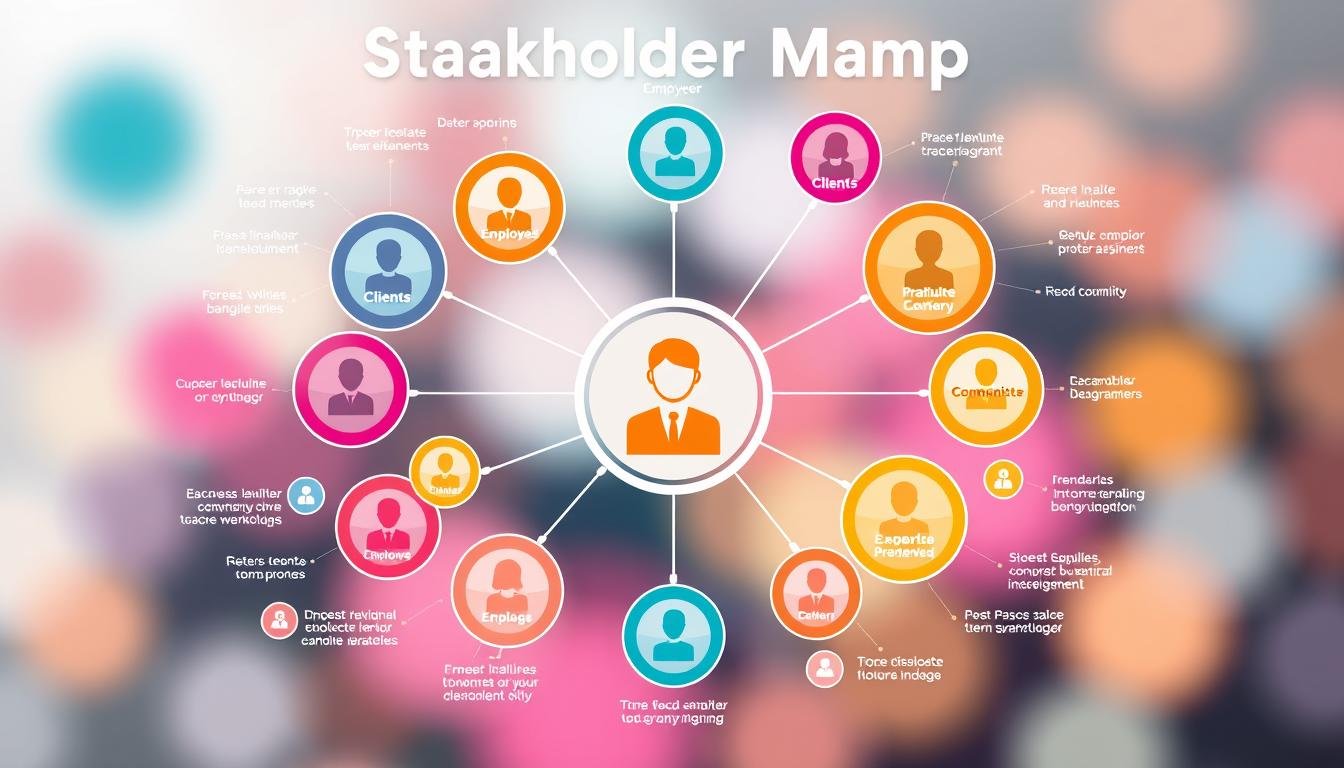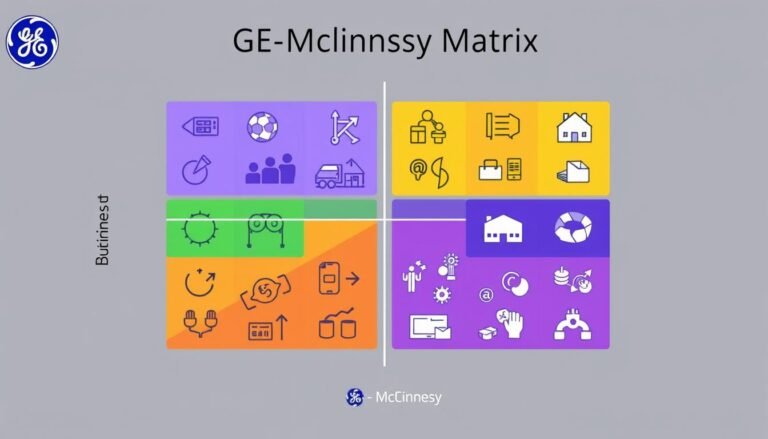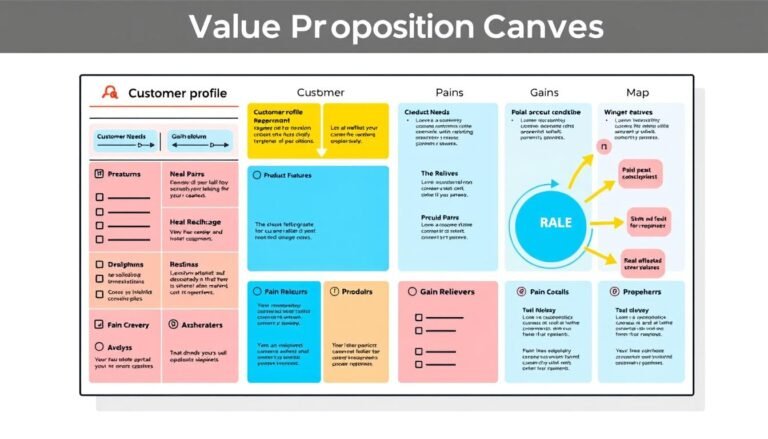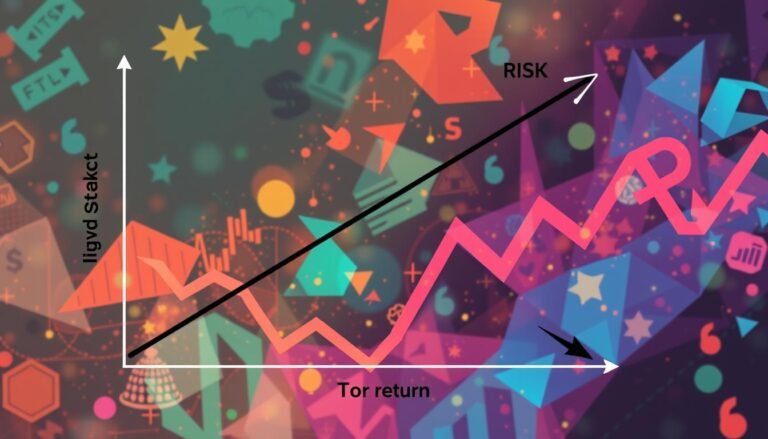Stakeholder Mapping: Key to Business Success
What if the secret to your project’s success isn’t in the strategy or resources? It’s in understanding and engaging with the right people. In today’s fast-paced business world, stakeholder mapping is key. It helps identify and sort out who matters most to your project.
This method is more than just a tool for project management. It’s about knowing who can influence your project and who cares about its success. By focusing on these people, you can make sure everyone’s on the same page. This approach boosts communication and makes sure everyone’s expectations are met.
Stakeholder mapping changes how you make decisions and can lead to big wins for your project. It’s a powerful way to make sure you’re not missing out on important people or their needs.
Key Takeaways
- Stakeholder mapping is vital for identifying project influencers.
- Internal and external stakeholders play distinct but collaborative roles in project outcomes.
- Effective communication depends on understanding stakeholder interest levels.
- Engaging stakeholders early maximizes project support and resource allocation.
- Regularly updating stakeholder maps helps in refining engagement strategies.
- Utilizing tools like Lucidspark streamlines the mapping process.
Understanding Stakeholders in Business
Knowing the different roles of stakeholders is key to success in business. These are people or groups that can affect, or be affected by, how a company works. They play a big part in how projects turn out. It’s important to know what they need and want to work well with them.
Definition of Stakeholders
Stakeholders are those who care about how well an organization does its job. This includes everyone from workers and bosses to customers and suppliers. By working with both those inside and outside the company, businesses can make sure their goals match up with everyone’s interests. This helps projects do well.
Types of Stakeholders: Internal and External
Stakeholders are divided into two main groups: Internal and External. Internal ones usually are:
- Project Managers
- Product Managers
- Legal Teams
- CEO/C-Level Executives
External Stakeholders are:
- Customers
- Partners
- Suppliers
- Shareholders/Investors
- Government Agencies
- Community Members
Both groups are crucial in shaping projects and making decisions.
The Impact of Stakeholders on Project Success
Getting stakeholders involved makes projects better. By mapping out who they are and what they care about, companies can plan better. This helps them keep their social license to operate.
Stakeholder mapping also helps in managing risks, cutting down on delays, and being clear about what’s happening. By talking to each group in a way that works for them, trust and support grow. Keeping track of how well stakeholders are engaged helps companies get better over time.
The Importance of Stakeholder Mapping
Stakeholder mapping is key to better project management. It helps find and understand people and groups that care about a project. This way, companies can make smart decisions, talk better, and find risks and chances in their projects.
Facilitating Strategic Decision-Making
Knowing who the stakeholders are helps companies make smart choices. By looking at their interests and how much they can influence, companies can make better decisions. This helps focus on who to talk to and make sure decisions match the company’s goals.
Enhancing Communication and Engagement
Good communication with stakeholders is crucial. Stakeholder mapping shows the best way to talk to each group, based on their needs and what they expect. This way, messages hit the mark, leading to better engagement and success.
Identifying Risks and Opportunities
Looking at stakeholders helps spot risks and chances. Mapping them is a way to be proactive in managing risks. It lets managers tackle problems early and use strengths of stakeholders to help the project. Stakeholders give valuable insights, keeping projects on track with goals and market needs.
| Aspect | Details |
|---|---|
| Stakeholders | Customers, employees, business partners, agencies, shareholders, suppliers, communities, governmental institutions, NGOs, competitors, media, industry associations. |
| Purpose of Mapping | Identify key stakeholders, understand their interests, manage relationships, enhance communication, mitigate risks, make informed decisions. |
| Key Benefits | Identifying key stakeholders, understanding interests, managing relationships, enhancing communication, mitigating risks, adapting to change. |
| Categories | Internal stakeholders (project sponsor, project manager, project team) and external stakeholders (customers, suppliers, governmental authorities). |
| Outcome Assessment | Improved decision-making, better risk management, enhanced communication strategies. |
Stakeholder Mapping Processes and Tools
Starting with a detailed Stakeholder Analysis is key to understanding who’s involved with a project. It helps us see who has power and interest. This step is vital for reaching out to people in a meaningful way and making the project a success.
Conducting a Stakeholder Analysis
A good Stakeholder Analysis has several steps:
- Defining the purpose of the stakeholder map.
- Identifying stakeholders and their levels of involvement, which could be categorized into primary, secondary, and tertiary stakeholders.
- Analyzing stakeholders based on their interests, goals, and potential conflicts.
- Prioritizing stakeholders according to their influence and interest levels to tailor engagement strategies effectively.
Tools for Effective Stakeholder Mapping
Choosing the right tools makes stakeholder mapping better. There are many software options, like:
- Smaply
- Miro
- Moqups
- Mural
- Lucidspark
These tools help show complex relationships with visual aids like grids and diagrams. For example, the power-interest grid helps sort stakeholders by their power and interest levels.
Developing a Stakeholder Engagement Strategy
After analyzing stakeholders, creating a Stakeholder Engagement Strategy is key. This plan details how to keep stakeholders interested and supportive. It’s important to connect with those deeply involved to build strong relationships and address their concerns.
Knowing what stakeholders need helps predict their wants and improve the project’s success.
Key Methods for Stakeholder Mapping
Effective stakeholder mapping uses several techniques to boost engagement and communication. These methods help organizations focus their efforts and resources well.
Power/Interest Grid and its Applications
The Power/Interest Grid is a key tool for stakeholder mapping. It sorts stakeholders into four groups by their power and interest levels. These groups are:
- High Power, High Interest
- High Power, Low Interest
- Low Power, High Interest
- Low Power, Low Interest
This grid helps project managers see who needs more attention and effort. It shows the influence and concern of each stakeholder. This way, organizations can make better communication plans.
Salience Model: Understanding Urgency and Legitimacy
The Salience Model looks at stakeholders by their power, urgency, and legitimacy. It shows how important each stakeholder is and what kind of approach is needed. Stakeholders can be:
- Latent
- Demanding
- Discretionary
- Dangerous
- Dominant
- Dependent
- Core
This model helps organizations see who needs quick attention. It makes communication strategies more effective.
Using RACI Matrix for Clarity in Roles
The RACI Matrix is a key tool for clear project roles and responsibilities. It labels stakeholders as:
- Responsible – those who do the task
- Accountable – the one who makes sure it gets done
- Consulted – those who give input
- Informed – those who stay updated
This matrix makes things clear among team members and helps with communication across stakeholder groups. Using the RACI Matrix makes things more efficient and accountable with stakeholders.
Best Practices for Stakeholder Communication
Talking to stakeholders well is key to project success and building trust. Using the best ways to communicate with stakeholders helps everyone understand and work together better. It’s important to know what each stakeholder needs to make sure everyone feels included.
Tailoring Messages for Different Stakeholders
When tailoring messages, we look at different people like employees, executives, investors, customers, and regulators. A good plan thinks about what each group needs to know and how to share that info. Using stakeholder maps helps us see who matters and what they care about. This makes it easier to send messages that hit the mark.
Regular Updates and Feedback Mechanisms
Keeping stakeholders in the loop is important. We use things like progress reports, emails, and newsletters to stay connected. It’s important to have a plan for when and who sends these updates. Feedback lets stakeholders share their thoughts, making sure they’re heard and valued.
Building Strong Stakeholder Relationships
Creating strong bonds with stakeholders means saying thanks and fixing issues fast. We keep an eye on these relationships and make sure someone is always talking to them. By changing how we communicate based on what stakeholders need, we work better together and make our messages more effective.
Conclusion
Stakeholder mapping is key to managing stakeholders well. It helps businesses aim for long-term success. By knowing who and why people are stakeholders, companies can make better decisions.
This knowledge helps in talking better with stakeholders. It also helps spot risks and chances for growth. This leads to better project results.
Most buying groups have six to ten people in them. So, it’s important to manage these relationships well. Research shows that 89% of buyers like to buy when they feel heard and valued.
So, it’s smart for B2B companies to invest in tools like LinkedIn Sales Navigator and RACI Matrix. These tools help in engaging with stakeholders.
Companies focused on purpose, like Certified B Corps, show the importance of thinking about all stakeholders, not just shareholders. Using tools for stakeholder mapping helps businesses tackle big challenges in a full way.
This approach keeps everyone involved and leads to better, more lasting solutions in business today.
Source Links
- Stakeholder Mapping 101: A Quick Guide to Stakeholder Maps
- A Quick and Dirty Guide to Stakeholder Mapping
- Stakeholder Mapping: When, Why, and How to Map Stakeholders
- Stakeholder Mapping: Methods, Benefits & Examples
- What is Stakeholder Mapping? Guide to Stakeholder Maps | MiroBlog
- The basics of Stakeholder Mapping | Smaply Blog
- What’s Stakeholder Mapping and Why It’s Important?
- What is Stakeholder Mapping & is it Important? Guide + Template
- Stakeholder mapping techniques and steps for success
- How to create a stakeholder map [templates & examples] | Mural
- Stakeholder Mapping: Definition, Importance, Process & Tools!
- How to Map Stakeholders with Five Techniques
- Stakeholder mapping techniques | Smaply Blog
- How to Create a Stakeholder Map (Templates & Examples Included)
- 5-step stakeholder communication plan
- Stakeholder Engagement Best Practice Guide
- 5 Important Elements of Stakeholder Mapping in B2B Sales
- Stakeholder Mapping: A Guide for Purpose-Driven Organizations







